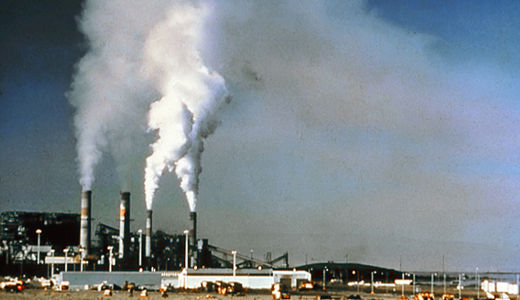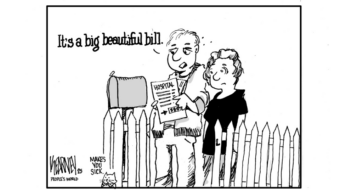
The Environmental Protection Agency today announced it would seek to dramatically cut air pollution in 31 eastern states and as far west as Texas and Oklahoma. The proposed rule will toughen standards on power generating plants that produce sulfur dioxide (SO2) and nitrogen oxides (NOx) in areas where wind carries the pollution across state borders.
The aim is to both reduce air pollution and provide states with the resources needed to meet federal air pollution standards when they are impacted by pollution created in other states.
The rule will adjust the EPA’s highly successful cap and trade program on SO2 and NOx. Responding to the dangers of “acid rain” caused by these two pollutants produced by power generation plants, Congress created the cap and trade program in 1994. It took full effect in 1998 and since then has reduced the emission of these pollutants by about two-thirds, according to an EPA study released last year.
According to the EPA website, the cap and trade program works by setting a cap on the total amount of pollution a business or government entity can emit. Those entities can then purchase “allowances” (by the ton) over the cap. If they emit less then they are allowed, they can save their allowances or sell them to other entities in the market. If they emit more than they are allowed, they must purchase additional allowances.
Despite the successes of the program, additional reductions in emissions are needed to meet federal standards by 2014.
“This rule is designed to cut pollution that spreads hundreds of miles and has enormous negative impacts on millions of Americans,” said EPA Administrator Lisa P. Jackson said of today’s announced rule. “We’re working to limit pollution at its source, rather than waiting for it to move across the country. The reductions we’re proposing will save billions in health costs, help increase American educational and economic productivity, and – most importantly – save lives.”
The EPA estimates that toughening these air pollution standards will save as much as $120 billion in health benefits in 2014 alone, and help 14,000 to 36,000 people avoid premature death, and alleviate hundreds of thousands of cases of asthma and bronchitis in the affected areas.
The rule will also encourage power generating plants to acquire available technology that reduces air pollution, the EPA said.
Gina McCarthy, EPA assistant administrator for air and radiation, told reporters that the new rule represents a dramatic improvement over the Bush administration’s handling of the issue. “[I]t achieves greater reductions [in pollution] sooner,” she said.
“This is attempting to give people cleaner air to breathe,” McCarthy explained, citing instances of high ozone and smog along the eastern seaboard the past few days. She also predicted the rule will have little or no impact on electricity prices.
Photo: National Park Service CC










